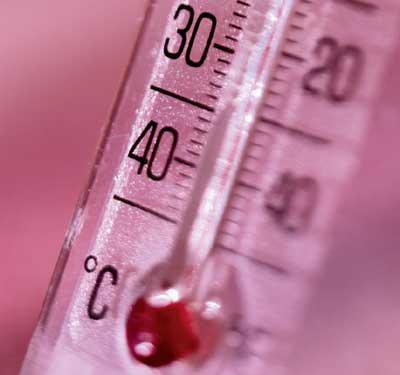
One of the things we hope to achieve through this website it to increase the level of lay medical education on common health and medical issues. Research has shown that people tend to make better informed choices about their health if they have more information. This is also backed by common sense. It makes sense that if we know more about an issue, we are better placed to address it. If we are to increase the average life expectancy of the typical Nigerian from the abysmal 46 years, then health education and promotion must be on the front burners in all spheres of our national psyche.
Fever is one of the commonest complaints in consulting rooms across our nation and indeed the world at large.
INTRODUCTION
It doesn’t matter who you are, at one time or the other in your life you have had a fever. In all cultures and amongst all peoples of the earth through all the ages of time, fever has been a recurring decimal. Thank God with advances in science and technology, and concomitant increase in our knowledge we now understand more about what fever is and what it is not.
Fever can be defined as a sustained elevation of the body temperature. Normal temperature range is between 36.4° – 37.2° C (i.e. 97.5° and 99° F). The actual temperature however varies depending on the part of the body where the temperature is taken. Normal rectal temperature is nearly a degree higher than mouth temperature which is in turn higher than axillary (armpit) temperature. The axillary temperature is the more commonly measured one in clinical practice. The rectal temperature however is the most representative measure of the body’s core temperature.
The body’s temperature undergoes variations during the day. It is generally lowest in the morning and highest in the late afternoon. It also varies with the sex (women often have higher normal temperatures than men), and with the state of activity (physical exercise causes a temporary rise in temperature).
Fever is a pathological (abnormal) condition due to a disturbance of the heat-regulating mechanism. It is a non-specific sign of illness and is associated with a wide range of diseases and conditions ranging from the ubiquitous (malaria), to be benign (hunger), to the dangerous (cancer). The usual associated symptoms of fever are a rise of temperature, increased pulse rate and breathing rate, and headache. Fever causes much loss of water from body tissues, and, as a result, dehydration may occur. The loss of water, together with lack of appetite and destruction of body protein, causes loss of weight. Dehydration as we have discussed is a potentially fatal state more so for children.
STAGES
Most fevers pass through three stages. For example, in the paroxysms of malarial fever the patient first experiences a chill and a feeling of cold that may be accompanied by violent shivering. The skin is cold and pale as the flow of blood through it is diminished, and the patient has a headache and loss of appetite. The second stage begins about half an hour after the onset of the chill. The skin becomes hot and flushed, and the temperature soon reaches its highest point. After perhaps two hours the patient enters the third stage when the temperature begins to fall. Perspiration is often profuse, urination may increase, and the patient gradually begins to feel better.
FLUCTUATIONS
The temperature fluctuation in fever varies in different diseases, and a careful study of the temperature curve is important to doctors for proper diagnosis and treatment. Temperature may drop slowly to normal, a phenomenon called lysis, as in typhoid fever, or may drop rapidly to normal, a phenomenon called crisis, as in pneumonia. A temperature remaining above normal for several days with only slight fluctuations is called a continued fever. When the temperature remains above normal and shows greater fluctuations, it is called a remittent fever. If the temperature drops to normal at certain times during the day but rises to well above normal at other times, it is called an intermittent fever. There are other characteristics which we look for but which I don’t think they are important for our discuss here.
ROLE IN DISEASE
The maximum temperature during fever varies from slightly above normal to 43° C (110° F), although temperatures above 41° C (106° F) are rare. The danger in fever is not from the high temperature, unless it exceeds 41° C, but in the destruction of body protein and fat. In many diseases a moderate degree of fever is probably beneficial in aiding the body to overcome infections. In some cases a fever is produced artificially in order to cure disease. Artificial fever may be produced by electrical equipment, such as air-conditioned cabinets. Short-wave diathermy machines are used in localized conditions for the treatment of specific tissues. Artificial fever was formerly used for the treatment of neurosyphilis (which has become rare with the advent of antibiotics). In 1917 the Austrian neurologist and psychiatrist Julius Wagner-Jauregg observed that patients suffering from this disease were greatly improved after an attack of malaria, which had caused high fever. Malarial fever was used in the treatment of neurosyphilis thereafter until the discovery of penicillin, which replaced fever therapy in the treatment of this disease.
Diseases involving fevers are those in which elevation of body temperature is the predominant symptom; among such diseases are relapsing fever, rheumatic fever, scarlet fever, undulant fever, and yellow fever.

